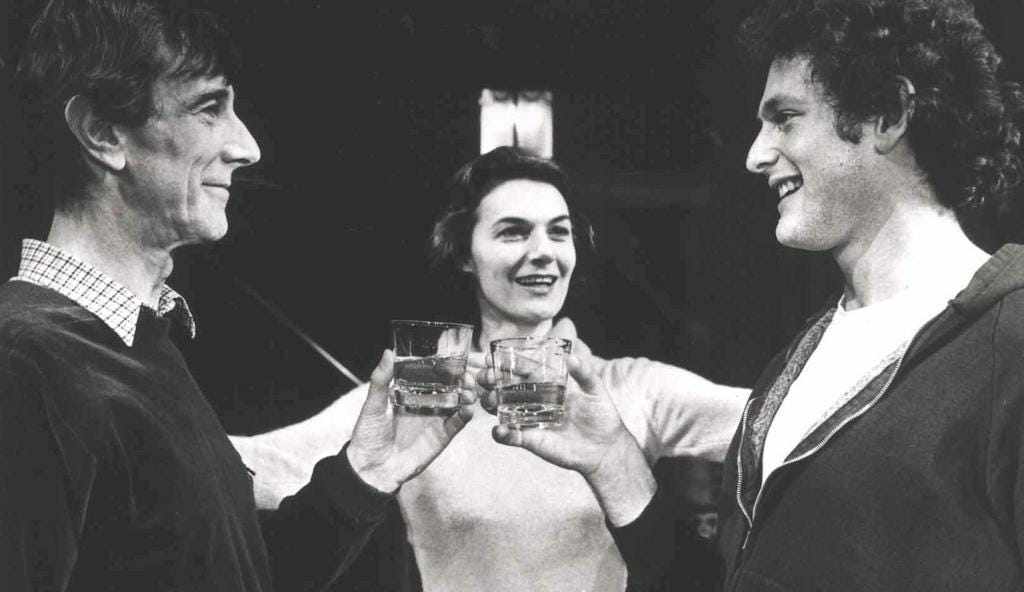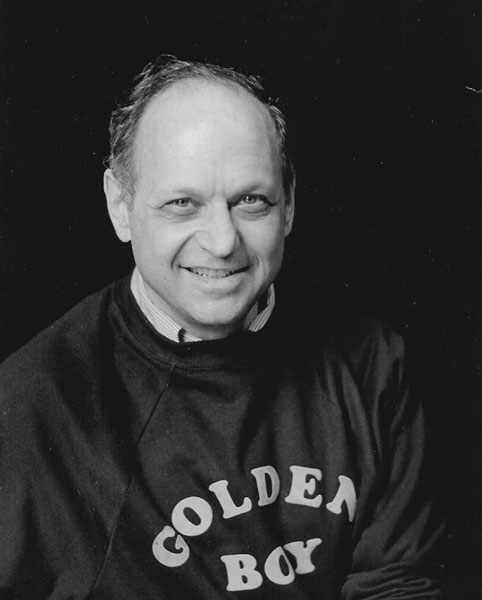
Moss Hart was born today on October 24, 1904, one-hundred-sixteen years ago. That’s a long time. Long enough to fade into oblivion, especially taking into consideration that some men who were elected President of the United States are barely remembered anymore. In his day, Moss Hart was a very famous name, especially for a writer and director, whose main prominence was Broadway. But such were the times when these movers and shakers were of paramount interest to people, with columnists in newspapers across the country dedicated to recording the comings and goings of the theatre district's denizens.

Ordinary people outside the parameters of show business were once able to tell you without fail about the writing partnership of George S. Kaufman and Moss Hart, whose nine plays written in collaboration included such hits as Once in a Lifetime, The Man Who Came to Dinner and You Can't Take it With You, which won them the Pulitzer Prize. Kaufman was one of the most sought-after individuals in the American theatre, even more versatile than Hart (theatre critic, playwright, director, actor), and the ten years they spent working together assured them a permanent spot in the annals of Broadway history. It's one of the reasons that when Hart’s autobiography Act One was published in 1959, it managed to not only become the #1 non-fiction book on the New York Times best seller list, it stayed there at the top for many months. Can you imagine? I'm tempted to say that phenomenon has never happened again with a book about the theatre.
Hart’s rags to riches story as a poor and impoverished child from a working class, immigrant neighborhood amongst the New York City tenements of the 1910s and 20s, captivated millions. And in a bold move, Hart chose to only take his readers up to the morning after the night of his first triumph: the Broadway opening of Once in a Lifetime in 1930; the play that introduced him to George S. Kaufman, the autobiography’s reluctant hero. All the successes that came after for Hart were well-known, and it had to have taken enormous restraint for him to not tell tales of his having worked over the course of his career with such giants as Irving Berlin, Harold Arlen, Ira Gershwin, Cole Porter, Rodgers and Hart, Ethel Waters, George M. Cohan, Clifton Webb, Fredric March, Gertrude Lawrence, Danny Kate, Bert Lahr and Beatrice Lillie. Not to mention Alan Jay Lerner, Frederick Loewe, Rex Harrison and Julie Andrews, with whom he helped guide to legendary status as the director of My Fair Lady. Hart chose to hold back on all this for what would have been a potential sequel: Act Two. Unfortunately, he never got to write it when a heart attack claimed him in 1961 at age fifty-seven (his first such attack felled him during the tryout of Camelot one year prior).
Hart was completely self-taught, never finishing high school. But due to a carefully honed persona, wholly of his own creation, he became the epitome of erudite sophistication, both as writer and man-about-town. He married the effervescent Kitty Carlisle in 1946, herself a singer and actress, and made themselves essential to New York City high society. Hart was forever trying to make up for his Dickensian childhood by wearing the fanciest of clothes and buying the most expensive things to fill an empty void. Attributed to Kaufman (the line's possibly apocryphal), was that when viewing Hart and Carlisle's 87-acre country estate in Bucks County, Pennsylvania, he quipped: “It shows you what God would have done if He’d had the money.”

Described as “enormously talented and incessantly depressed,” Hart was a disciple of a well-known (and, frankly, charlatan) of a psychiatrist named Lawrence Kubie. He had him in analysis so often that Hart would sometimes go twice a day. Using a good deal of that experience formed the basis of his story for Lady in the Dark (1941), a musical he created with Kurt Weill and Ira Gershwin; a problematic, but highly original musical. Of Kubie, Gore Vidal once wrote "he was a slick bit of goods on the make among the rich, the famous, the gullible.” Perhaps if Hart had lived longer and explored it deeper, his relationship with his shrink could have made for another book of an entirely different order.
He had tremendous good fortune writing for film as well, winning the Academy Award for his screenplay adaptation of Laura Z. Hobson’s book Gentlemen’s Agreement, as well as adapting the second of the now four versions of A Star is Born (the one with Judy Garland and James Mason). He's also credited with the screenplays for Hans Christian Anderson, starring Danny Kaye, and Winged Victory, adapted from the first play he wrote on his own after splitting (amicably) from Kaufman.

And as a director, Hart was without peer. If you read the voluminous accounts written about My Fair Lady, it is abundantly clear that without his guidance the show might never have been a hit, or perhaps, not even made it to Broadway. He had to gently coax the Henry Higgins out of Rex Harrison (as problematic a star as there ever was) with more adroitness than any diplomat. And he personally spoon-fed the role of Eliza Doolittle to the show’s newcomer, a twenty-one year-old Julie Andrews, by way of line-readings and private sessions; in a sense becoming his own Higgins to her Eliza.

Like so many others seeking a career in the theatre, Hart’s Act One was a life changing read for me. A lifesaver even, rescuing me from a feeling that I would never be able to rise above my status and achieve the success of which I dreamed. In the days before you could easily buy an old hardbound edition on Ebay, or any other such available website, I would always grab one when I found it among the stacks at the Strand in New York City or other used book stores, giving it as a gift whenever appropriate. The book never fails to engage and enlighten, even if much of it has now been exposed as a bit of fantasy. Stephen Bach’s Dazzler, the first biography of Hart published in 2001, largely debunked many of Act One’s most seductive stories. This was tough for a fan such as myself to discover, even if it was something I long suspected. It was Kaufman himself who said in 1959, at the time of its publication, that he was “very pleased for Moss that Act One is on the best seller list. I simply feel that it should be under fiction instead of non-fiction.”
In 2014, Act One was adapted for the stage by writer-director James Lapine (a film of it was made in 1962 that at best can be described as a travesty and — at worst — an abomination). Lapine’s inexplicable choice to have three actors play Hart, was to my mind both unnecessary and unwise. You can judge for yourself as it was filmed from the stage of the Vivian Beaumont Theatre for PBS’s Live from Lincoln Center and is available to watch online. Before its opening night, Frank Rich, a longtime fan of the book, wrote an article for New York Magazine stating eloquently what makes Act One so special and enduring: “It says you can escape a home where you feel you don’t belong, you can escape a town you find suffocating, you can follow a passion (the theater, but not just the theater) that is ridiculed by your peers, you can — with hard work, luck, and stamina — forge a career doing what you love.”

Amen to that. And thank you, Moss Hart.
If you enjoy these columns, check out Up in the Cheap Seats: A Historical Memoir of Broadway, available at Amazon.com in hardcover, softcover and e-book. And please feel free to email me with comments or questions at Ron@ronfassler.org.





















Write a comment ...